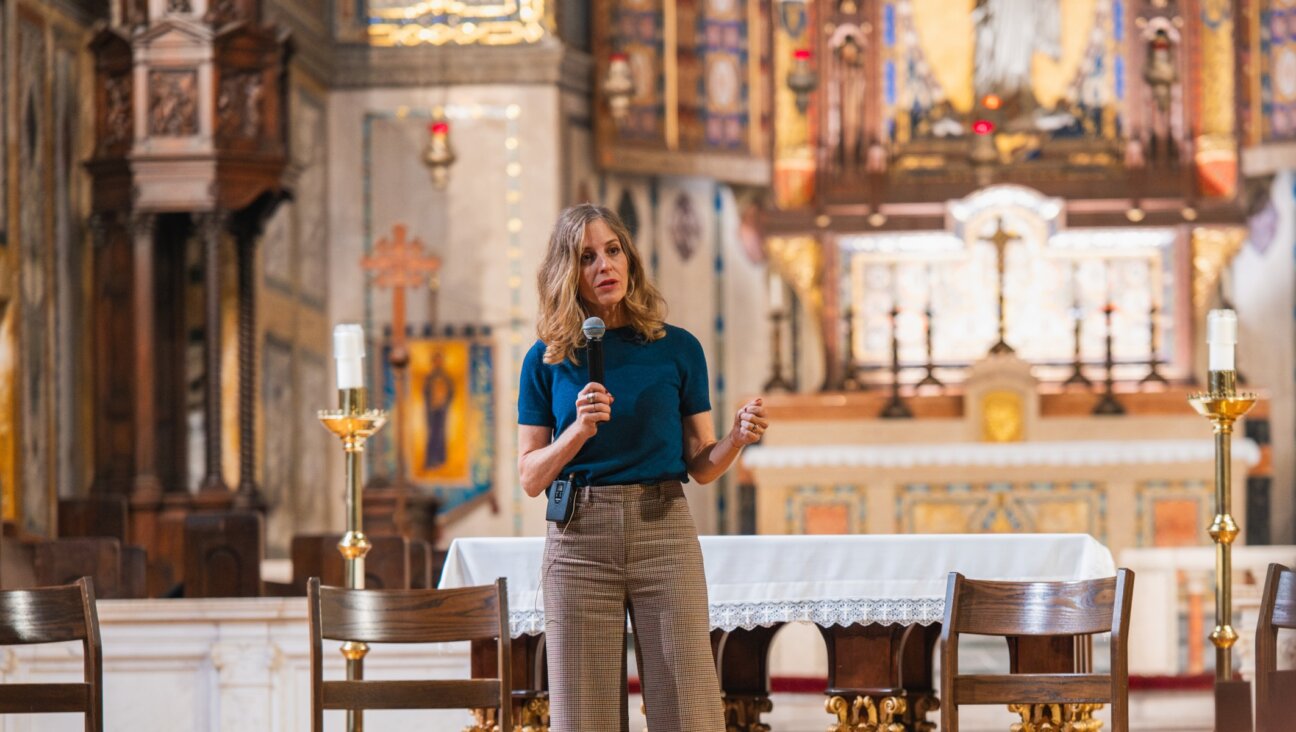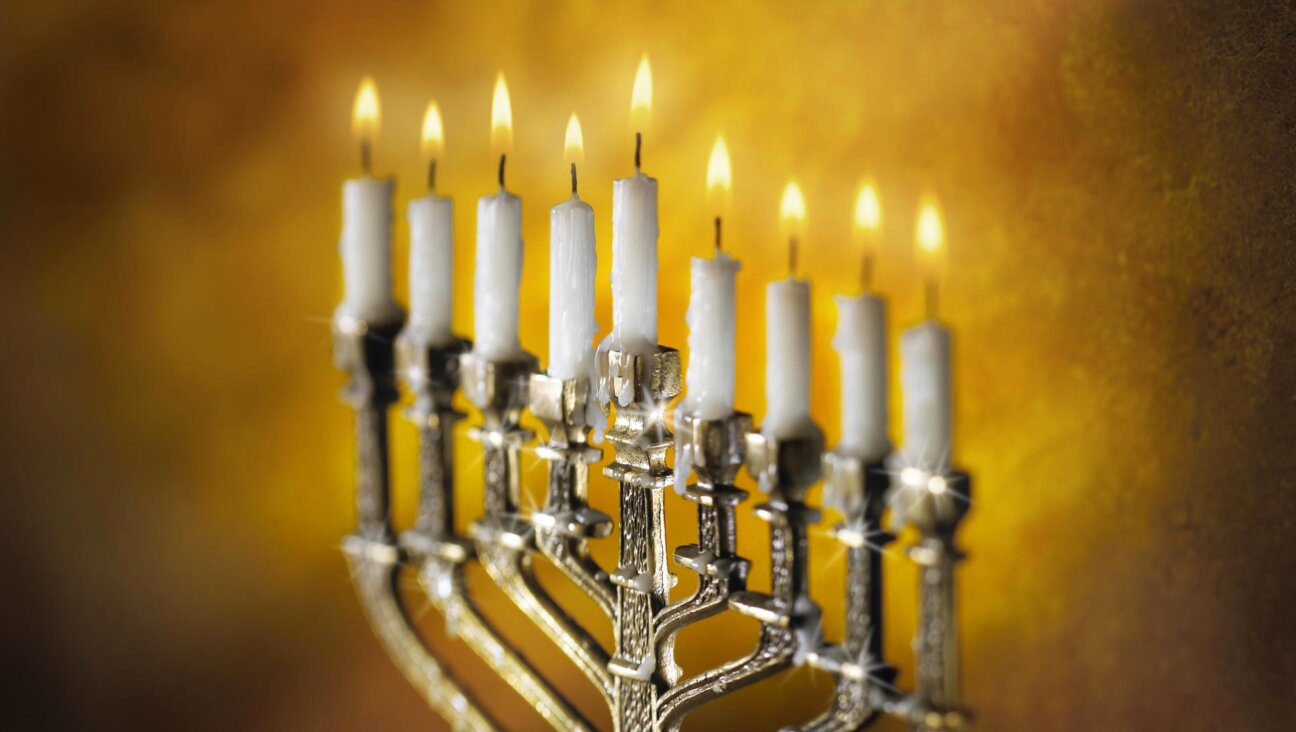Gaza Pullout Strife Gives New Theme To Fast Mourning Temples’ Destruction
The religious fast day of Tisha B’Av, which mourns the destruction of the ancient temples in Jerusalem, has taken on a unique resonance this year as synagogues across the country struggle with the meaning of Israel’s impending withdrawal from Gaza.
The planned evacuation of 8,000 settlers from Gaza and the northern West Bank has imbued the holiday’s themes of destruction, exile and Jewish disunity with unaccustomed currency. Rabbis across the United States plan to incorporate thoughts about the disengagement into their observance of the holiday, and to help their congregants apply the lessons of the fast day to the challenges ahead. Many rabbis are planning to lead discussions about the links between Tisha B’Av and the disengagement, add special meditations to the service, or attend prayer vigils over the weekend and on Monday, when the evacuation begins.
As with any time that Jews of varying persuasions find themselves addressing the same holiday or political development, interpretations vary.
Largely lacking, even among the strongest opponents of disengagement, is the assumption shared by much of the Israeli settlement movement itself that the evacuation of Gaza represents the short-circuiting of the messianic process
and the first step in the literal destruction of Israel, putting it on a par with the earlier calamities marked by Tisha B’Av.
Instead, American opponents of disengagement are focusing on other lessons.
Disengagement opponents are stressing the ancient rabbinic teachings that depict the destruction of the Second Temple in 70 C.E. as a divine punishment brought on by senseless hatred among Jews. Under this interpretation, it is the political enemies of the settlers who are responsible for any national disunity.
“That senseless hatred reminds me of the senseless hatred that so many [contemporary] Israelis from the left and Jews of the left have for the Jews who live in Judea, Samaria and Gaza, who they claim are causing all the problems for Israel,” said Mort Klein, president of the Zionist Organization of America, which strongly opposes disengagement . The ZOA is planning to hold several prayer vigils in conjunction with anti-disengagement group, the Alliance for Eretz Yisrael, at Israeli consulates in New York and a number of other cities worldwide over the weekend and early next week.
Rabbi Pesach Lerner, executive vice president of the National Council of Young Israel, an anti-disengagement Orthodox group with strong ties to the settlement movement, said the planned evacuation shows that “there is no unity today” in the State of Israel. “We’re destroying ourselves,” Lerner said, before pointing the finger directly at those planning the disengagement plan. “It’s always been that other nations have destroyed the temple or exiled the people. This is the first time in the history of the Jewish people, to my knowledge, that the Jewish people are exiling a part of the Jewish people.”
Yet other rabbis turned the tables, saying it was anti-disengagement activists who are sowing disunity. “This is a legitimately constituted government of Israel… and civil disobedience up to a point is okay, but when you’re inciting your brothers to be physically restraining [you]” that crosses the line, said Rabbi Eric Cytryn of Beth El Temple, a Conservative congregation in Harrisburg, Pa.
Cytryn also said the insistence of keeping possession of the settlements at any cost itself echoes some of the dimensions of the Tisha B’Av story. “The consensus opinion is that the First Temple was destroyed because the sin of idolatry” he said, referring to the Temple that tradition holds was built by King Solomon and destroyed in 586 B.C.E. So the question is, “are we making a part of Israel… are we making that into an idol?”
Whichever side is to blame for the national discord on the eve of disengagement and Tisha B’Av, some Orthodox leaders say that the key thing this year is to use the holiday to help understand how the Jewish people can overcome disunity by moving forward and maintaining hope.
“To me the most important issue is not what is happening, but how we are responding to it and how we can maintain our love for each other and some modicum of unity within our people despite the fact that we have such strong divergent views about the decision that’s being made,” said Rabbi Yosef Blau, the spiritual counselor at Yeshiva University’s affiliated seminary and president of the Religious Zionists of America.
A couple of weeks ago, the liberal Orthodox group Edah released a Kavanah, or meditation, to be recited before the traditional prayer for the State of Israel, that stresses the need for internal unity in times of conflict. Congregations across the country have used it during Shabbat services and plan to do so during Tisha B’Av.
The Orthodox Union, which represents about 1,000 congregations, has produced a video to be shown over the holiday in congregations across the country, titled “Mourning For What Was, Hurting for What Is, Believing in What Will Be.” The video, which features the commentary of several rabbis, including Tzvi Hersh Weinreb, executive vice president of the O.U., puts a hopeful spin on the disengagement conflict by placing it in the context of the many tragedies that Jews have endured and paints the messianic process as an up-and-down journey toward fulfilling God’s promise of ultimate redemption. The video ends with a montage of highs and lows from throughout Jewish history, set to the song “Ani Ma’amin” — literally “I believe,” in reference to the coming of the messiah — the profession of faith outlined by the medieval scholar Moses Maimonides and sung centuries later by Jews during the Holocaust.
Rabbi Jonathan Blake, an associate rabbi at the Westchester Reform Temple in Scarsdale, N.Y., said that he and his Reform colleagues also believe that the lessons of Tisha B’Av suggest that the disengagement conflict should be viewed in terms of hope, though for very different reasons than the Orthodox.
“Not only does the Reform movement not wish for a resurrection of the temple, the Reform movement has found a way to celebrate the way in which the destruction of the temple helped paved the way for a different kind of Judaism, a kind of Judaism that all of us — Orthodox, Conservative and Reform — call our own,” Blake said. “We found a way to survive that allowed for vast innovation and creativity and spiritual growth.”
A message from our Publisher & CEO Rachel Fishman Feddersen

I hope you appreciated this article. Before you go, I’d like to ask you to please support the Forward’s award-winning, nonprofit journalism during this critical time.
We’ve set a goal to raise $260,000 by December 31. That’s an ambitious goal, but one that will give us the resources we need to invest in the high quality news, opinion, analysis and cultural coverage that isn’t available anywhere else.
If you feel inspired to make an impact, now is the time to give something back. Join us as a member at your most generous level.
— Rachel Fishman Feddersen, Publisher and CEO























